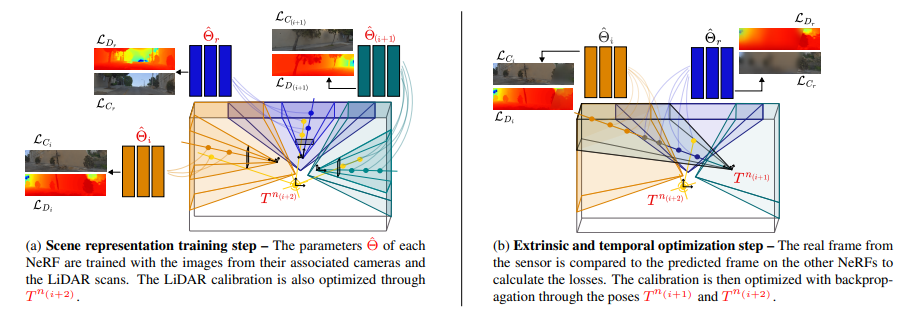|
In rapidly-evolving domains such as autonomous driving,
the use of multiple sensors with different modalities is crucial to ensure high operational precision and stability.
To correctly exploit the provided information by each sensor in a single common frame, it is essential for these sensors to be accurately calibrated.
In this paper, we leverage the ability of Neural Radiance Fields (NeRF) to represent different sensors modalities in a common volumetric
representation to achieve robust and accurate spatio-temporal sensor calibration.
By designing a partitioning approach based on the visible part of the scene for each sensor,
we formulate the calibration problem using only the overlapping areas. This strategy results in a more robust and accurate calibration that is less prone to failure.
We demonstrate that our approach works on outdoor urban scenes by validating it on multiple established driving datasets.
Results show that our method is able to get better accuracy and robustness compared to existing methods.
|



